Cobbold Gorge Tour
The story of discovery of Cobbold Gorge and it becoming a tourist attraction is quite interesting. The gorge is situated on land that was established as Robin Hood Station in the 1800s by the Clark family. On the sandstone walls of the pool at the entrance to the gorge is a carving J E Clark 1900 but despite having obviously found the pool the clark family did not know about the gorge. The property was sold to Cobb Terry and his family in 1964. In the 1990s the Terry family decided to divide the property between the members of the next generation and the youngest son Simon Terry got the worst of the subdivision. It was considered the worst because it had large areas of sandstone outcroppings which cannot support cattle. Simon discovered the gorge 1992 after the division and almost immediately started running tours through the gorge.
Regarding the gorge itself I will let the photos below tell the story.
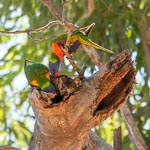
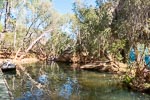
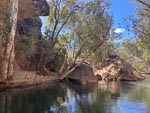
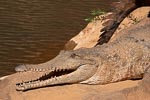
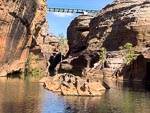
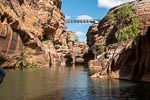
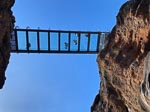
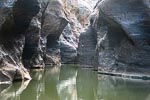
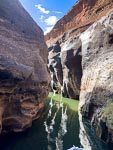
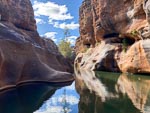
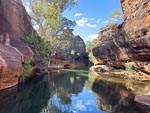
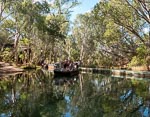
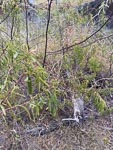
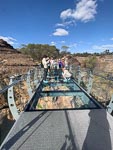
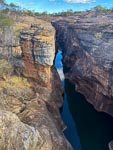
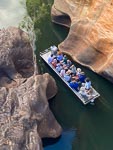
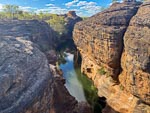
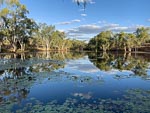
From the tour guides we heard a bit about the intracacies of running cattle on properties in the area.
The original settlers tried running cattle that were derivatives of English cattle breeds and this worked with less than stellar success. These breeds were suseptible to ticks and needed to be "dipped" regualarly, and they struggled with the heat (they pant but dont sweat) and poor footing in the long grass. The introduction of Brahman and Brahman Crossbreeds has solved some of these problems. The brahmans actually sweat which provides better cooling in the regions hot weather, the sweat contains oil that prevents ticks attaching to the animals. Also the brahmans have longer legs and smaller feet which make it easier for them to walk in the rugged long grass covered ground.
Brahmans however do require a little bit of care. Late in the dry season the grass becomes very tough and heavy in seed which the cattle find hard to digest. They are provided with enzyme "licks" which aid in digestion during this period. They also need to drink water twice a day so the properties have large networks of drinking stations that are supplied through "poly pipe". Interestingly this drinking network can be used to muster the cattle into larger groups. Water to the more remote drinking station is turned off progressivly and the cattle naturally move towards the still functioning water points thereby congregating into larger groups.